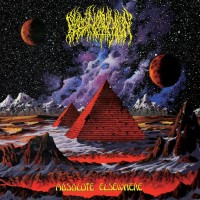Getting Into: Amorphis

| Written by: | musclassia |
| Published: | September 04, 2015 |
Amorphis
Death Metal, Death/Doom, Folk Metal, Melodic Death Metal, Progressive Rock, Progressive Metal, Heavy Metal
Finland
Amorphis are a group that has lived up to their name, refusing for much of their career to maintain a set style and ever exploring new sounds. Whilst this has become less true in the past decade with their current stable line-up, it does make introductions to the band difficult. Where do you start? Their dark, intense and groundbreaking early extreme metal albums, their middle phase of melancholy proggy hard rock, or their output after their most recent transition to a more straight-forward but no less enthralling blend of folk-influenced, melody-driven yet hard-edged metal that is distinctly their own? Each of these phases of their career produced music well worth discovering, if also some less essential listening alongside it. And with the band's twelfth full-length album, Under A Red Cloud, on the brink of release, what better time to start exploring their significant back catalogue. This article aims to give newcomers to the group a glimpse at what to expect from each of their records, in terms of their sound and how worthy they are of a curious listener's time.
Note: Since publication in 2015, this article has been updated to include the subsequently released Under The Red Cloud and Queen Of Time.
..
Full-length albums
     | The Karelian Isthmus (1992) The band's debut is far removed from almost everything they would subsequently put out - even by their sophomore effort, the dark, intense doomy death metal sound of this album was quickly disappearing. In spite of this, or more likely because of it, The Karelian Isthmus has something of a cult following among a subset of the band's fans. Clearly spawned from the European death metal sound of the time, it followed the likes of 1990's Left Hand Path and 1991's Like An Ever Flowing Stream and shares obvious hallmarks with those albums in terms of plenty of buzzsaw riffing, raw production and so on, but with a cavernous sound perhaps closer to early Obituary. Yet at the same time, its doomier inclinations, with much greater prominence of slower, murky phases, alongside confident use of lead guitar lines and background keyboards helps separate it from similar bands, as does the more melodic inclinations of its riffs. The overt melodically-leaning nature of "Grail's Mysteries" and "Warrior's Trail", the sinister lead guitar sounds in "Black Embrace", the catchy "Exile Of The Sons Of Uisliu" and the dual guitar harmonies of "The Lost Name Of God" are just some of the standout moments that help distinguish this album from some of its most renowned 'competitors'. It is a rough effort, and Amorphis would develop the sound that truly made them stand out from the crowd on the following album, but for fans of old school death metal, there is plenty to enjoy here. Standout Tracks: "Black Embrace," "Exile Of The Sons Of Uisliu," "Sign From The North Side" |
| Tales From The Thousand Lakes (1994) A real early triumph in Amorphis's career, Tales From The Thousand Lakes is a staggering mesh of death metal crunch, doomy atmosphere, melodic tendencies, folk influences, prog sensibilities (particularly with the keyboards) and more to create an album that is difficult to compare to anything. And not only is it ambitious, it's completely convincing with its implementation of these different sounds in writing a series of songs that are at once innovating, captivating and thoroughly enjoyable by themselves, and yet distinctive enough to produce an album that is varied and adventurous even within its own unique sound. Whether it's the sinister gloom of "Into Hiding," "The Castaway" with its mystical aura, or the morose "Forgotten Sunrise," there's plenty of different tonal marks hit along the journey, all accompanied by the visceral growls of Tomi Koivusaari. In addition, the keyboards, whilst still mostly in the background, get a few starring cameos, including some scene-setting and progging it up in "To Father's Cabin" and "In The Beginning," plus an outlandishly flamboyant performance in "Magic And Mayhem." Last but not least, clean vocals appear for the first time on a few tracks, including the bizarre appearance in "Into Hiding" and some evocative howls in "In The Beginning," but most obviously in the album's single, the majestic centrepiece "Black Winter Day." All this together produces what is arguably the band's finest work, and that coming from a major fan of Joutsen-era Amorphis. If you have any interest (or at least tolerance) for early '90s extreme metal and fancy seeing a unique spin on it, do not hesitate to check this out. Standout Tracks: "Black Winter Day," "In The Beginning," "Forgotten Sunrise," "Magic And Mayhem" |       |
      | Elegy (1996) Elegy saw Amorphis moving further away from death metal towards a folk-inspired, prog-influenced melodic death sound that was still completely distinct in tone from the Gothenburg scene emerging at the same time that would inspire an entire genre. This album saw a major change for the band in personnel, too, with Pasi Koskinen joining as the clean vocalist for the next four albums. With this addition, cleans became far more abundant throughout the album, with similar or possibly even greater prominence than the classic growls of past albums. And along with the vocals, the instrumental approach and production sound was lightened up and slightly cleaner, as can be heard from the first riff of "Better Unborn" after its Eastern-sounding intro. Whilst some may mourn this change, it did enable the writing of a very strong and consistent album that, like its predecessor, has a sound almost entirely its own. And supporting this sonic change are some great songs, like the upbeat "On Rich And Poor" with its energetic guitar leads and captivating central folk melody, the proggy, grandiose title track, and not one but two versions of the incredible "My Kantele." Both these versions, the main version with its huge verses and the acoustic reprise that closes the album, feature a bewitching opening, great chorus, and some outstanding instrumental parts. Whilst perhaps not as consistently astounding as Tales?, it is arguably more varied, with "Weeper On The Shore" and its slack verses, the quiet slow-burner "The Orphan," and the bouncy-yet-punchy "Against Widows." And it ultimately acts as a final statement in the first part of the band's musical journey, a hugely impressive period that still acts for many as the peak of Amorphis's career. Standout Tracks: "On Rich And Poor," "My Kantele," "Elegy" |
| Tuonela (1999) By this point in their career, any ties to extreme metal had evaporated from Amorphis's sound. In its place was a sound driven by Koskinen's clean vocals above a rock-oriented sound in which the instruments came to sit somewhat in the background. However, Tuonela, the first release with this approach, still manages to remain convincing. The songs from this period are their sharpest, most evocative and ultimately successful attempts at this style. The vocals are still moving and committed, the guitars manage to produce some captivating riffs and melodies (such as the jingly main riff of "The Way"), and the atmosphere produced is suitably melancholy without becoming dull. The driving groove of "Morning Star," the strong Eastern tone of "Greed" (which also features the album's only growls), the grandstand finish of "Divinity" and the folky "Rusty Moon" are some of the high points of the album. There is also the occasional new flourish for the band, most notably the flute on "Rusty Moon" and sax cameos on "Nightfall" and the title track. In the end, whilst lacking any real killer songs and not entirely strong throughout, it is arguably the best effort from Amorphis's mid-period (aside from a certain song from the next album) and the one most worth checking out if curious about this unheralded part of the band's story. Standout Tracks: "The Way," "Morning Star," "Rusty Moon" |      |
    | Am Universum (2001) Possibly the weakest album in Amorphis's career, it starts off with what is easily the most famous and highly-regarded song from post-Elegy Koskinen Amorphis, "Alone," an atmospheric, sorrowful song on which the band arguably gets closest to the Suomi style of later Sentenced and others. However, beyond this song, we are treated to a series of tracks that, whilst offering moments or sections of entertainment, are ultimately a bit uninspired and lacking compared to what the band had produced before. "Goddess (Of The Sad Man)" and "The Night Is Over" are both lively and sufficiently enjoyable, "Grieve Stricken Heart" has some nice vocal melodies, and the band is still capable of writing attention-grabbing guitar lines when they aren't tediously chugging away somewhere in the background. However, none of these songs are likely to convert more than a few people into fans of the band. Also, "Crimson Wave" and "Drifting Memories" rank amongst the dullest songs the group has produced to date. The continued presence of saxophone appearances and jazz leanings presented on "Tuonela," much maligned in other quarters, actually work fairly well in my opinion; most prominent on "Veil Of Sin," an effective haunting piece, they add a nice flavour. But despite this, Am Universum remains an uneven and ultimately unmemorable meander with limited positives to sell it with. Standout Track: "Alone" |
| Far From The Sun (2003) The final album Amorphis released with Pasi Koskinen, Far From The Sun is not at all unappealing, yet slightly sounds like a band approaching something of a creative dead end, and perhaps the split was for the best. Opening promisingly with the immediate "Day Of Your Beliefs," with louder guitars than previous albums and engaging guitar leads and vocal lines, the album then establishes itself as a more straightforward, stripped-down, hard rock-leaning version of the sound from the band's last two efforts. The more energetic feel this leads to gives the songs and full album more to latch onto than the oft-pondering Am Universum, and consequently results in a stronger album. "Mourning Soil" has a very effective lead guitar/chorus combo, "Killing Goodness" is pulled along by its vibrant keyboard display, and "Smithereens" is a fitting end to the period, with its elaborate guitar solo and imploring vocals. However, as a package the album doesn't quite reach greatness, and ultimately the splitting of band and vocalist would lead to a creative resurgence that revived and transformed the band. Standout Tracks: "Day Of Your Beliefs," "Mourning Soil," "Smithereens" |     |
      | Eclipse (2006) With Koskinen's departure, we saw the arrival of Tomi Joutsen, a majestic man with a deep, powerful voice and glorious hair. Along with a new voice, we also acquired a new sound, and a new lease of life that brought about a major return to form. Joutsen was a major component of this revival, restoring growls (his own rather than Koivusaari's) to the music along with his imposing and evocative clean vocals. But there was also a welcome return to metal - whilst some of the songwriting sensibilities and guitar melodies of the last album or two remained, they were backed up with a powerful sound, cleaner than the early albums but punchier than the mid-era records, plus meatier and hookier riffs. These factors partly explain why the band sounds so vital on this record, but so does the inspired songwriting they managed to bring forth on top. From the opening minute of "Two Moons" the difference from the past few releases is obvious, a rediscovered energy combined with direct songwriting, hooky riffs and a rousing outro that announces in 3 minutes that this is a new, revitalised band. What comes next are immediately memorable tracks such as the simple yet effective "House Of Sleep," the menacing "Perkele," the melancholy-cum-frantic "Under A Soil And Black Stone" and the stunning "The Smoke." In addition, the return of folk influences, most obvious on "Leaves Scar" and "Brother Moon" is very welcome and highly effective. Eclipse announced a new, unique and utterly captivating sound for Amorphis that would stay with the group for the following 4 albums, subtly modified and developed to avoid staleness and remaining similarly effective. And yet, despite the success of following albums, Eclipse is arguably still the best Joutsen-era Amorphis album. Standout Tracks: "House Of Sleep," "Perkele (The God Of Fire)," "The Smoke," "Brother Moon" |
| Silent Waters (2007) The second Joutsen Amorphis album very much maintains the same key elements that made Eclipse so successful, but with a subtly different take on it that one could perhaps term 'maturity,' or perhaps confidence brought on by the success of the previous year's effort. We have adventures into new territory, particularly onto "Towards And Against" with its dance-like electro intro and subsequent sustaining beat resulting in one of the album's best efforts. But there are also callbacks to early albums; in particular, "A Servant" has always sounded to me like a song that could've been on Elegy. There are a number of other treats on the album. Patient opener "Weaving The Incantation" takes a different route to the direct and emphatic "Two Moons" of Eclipse, instead involving a mid-tempo verse/chorus display that gives way to a delightful acoustic-driven mid-section. Acoustics also dominate the campfire ballad "Enigma" and the slow-burning closer "Black River." Further treats include the heartfelt ballad "Her Alone" and hugely hooky "Shaman." Whilst the simplistic title track and the slightly dragging "I Of Crimson Blood" are perhaps a step below some of the other songs, this is nevertheless a highly accomplished effort that cemented Amorphis's place as a band to look out for. And hey, it managed to get me hooked on the band! Standout Tracks: "Towards And Against," "Enigma," "Shaman," "The White Swan" |      |
     | Skyforger (2009) The softest release from the current incarnation of Amorphis, Skyforger is one of the band's more folk-inspired releases, and also possibly their most keyboard/piano-dominated release. This does help to produce some of the band's best efforts; however Skyforger is a somewhat inconsistent album. The grandiose "Sampo" covers a fair amount of ground and makes a big statement, and is subsequently followed by the instantly gripping guitar leads of "Silver Bride." The first half also contains the spellbinding riff of "Sky Is Mine" as well as the album's heaviest song (by quite some way), "Majestic Beast." Unfortunately, the album's second half can't quite live up to this, and that fact is particularly highlighted by following up "Majestic Beast" with two predominantly slow and soft tracks, both perfectly acceptable by themselves, but neither amongst the band's best songs and back-to-back something of a momentum-killer. The closing few tracks restore some punch and are all enjoyable, particularly the title track, but none quite reach the levels of some of the early songs, and this imbalance compared to other Joutsen albums is a weakness to Skyforger. However, at its best, the record acts as further evidence of the songwriting capabilities and consistent output of latter-day Amorphis. Standout Tracks: "Sampo," "Silver Bride," Sky Is Mine," "Skyforger" |
| The Beginning Of Times (2011) As almost a complete opposite to Skyforger, The Beginning Of Times is perhaps the heaviest recent Amorphis release; certainly, extreme vocals are most prominent on this album. However, these differences are relative, and this is still clearly recognizably the same band that produced Eclipse 5 years prior. This raised concerns for some people that the band might be in danger of running out of ideas, particularly considering this is perhaps the least consistently successful album since Tomi Joutsen joined the band. However, whilst songs like "Three Words" and "Escape" are perhaps not Amorphis classics, there are still plenty more hits than misses here, and some of the hits are stunning. The slow-building "Battle For Light" is, although very enjoyable, not the strongest opener on recent albums, but it is immediately followed by the hyper-melodic and upbeat "Mermaid" and the imposing and at times ferocious "My Enemy," a powerful double-header that announces there's plenty of life in the old dog yet. Beyond that, there are such successes as "You I Need," a very safe yet effective single, the unique and wide-ranging "Soothsayer," particularly notable for featuring female vocals in a short but effective role, and the delicious guitar solos of the closing title track. But arguably the standout song, and certainly the one with the biggest potential for dividing opinion, is the incredibly playful "Song Of The Sage", with its distinctive guitar melodies, fast growl/clean vocal interchanges and little flute parts. Such ambitious attempts as this and "Soothsayer" help maintain hopes that Amorphis can keep up with this general sound at the same time as producing songs with their own unique sounds and personalities, and whilst being one of the band's less consistent efforts, The Beginning Of Times in general sounds like a band striving to continue producing new and interesting music. Standout Tracks: "Mermaid," "My Enemy," "Song Of The Sage," "Beginning Of Time" | 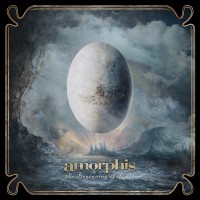     |
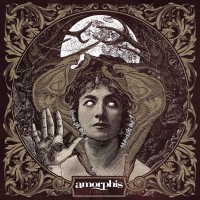      | Circle (2013) Although The Beginning Of Times raised a few eyebrows in some circles, Circle killed the vast majority of concerns with a major display of inspiration, featuring a range of diverse yet compelling songs. Whilst generally having a softer tone than at least its immediate predecessor, Circle features a couple of the band's heaviest songs in over 15 years, each demonstrating a sound not yet heard from the band. And whilst effective opener "Shades Of Gray" isn't a particular departure from the band's previous work (although it has real headbanger of a bridge), it's hard to think of a time the band has been so folky as the huge-sounding "Narrow Path." Similarly folky is "Nightbird's Song," with plenty of flute in its midsection sandwiched by some punishing extreme metal, almost approaching black metal territory in the verses. The other extreme metal cut is the colossal "Enchanted By The Moon", with its dark and doomy sound intermingled with some emphatic guitar leads and a huge chorus. Not all the songs are a success; "Hopeless Days" is amongst the least effective songs produced since Joutsen joined the band, a turgid and simplistic affair barely rescued by a somewhat entertaining mid-section and outro. However, even the non-standout cuts offer plenty to enjoy, such as the hooky lead melody of "Mission" or the softer, 'calm after the storm' closer "A New Day." All this comes together to produce a varied yet cohesive and hugely effort that shows that, 11 albums in, Amorphis are still capable of delivering some of their finest work. Standout Tracks: "Shades Of Gray," "Narrow Path," "Nightbird's Song," "Enchanted By The Moon" Note: even by Amorphis's standards, Circle has a large number of different bonus tracks on various releases. All are perfectly pleasant, but none are of the level of the tracks that made the cut, with the possible exception of 'Hopeless Days'. The strongest of the bunch is 'Dead Man's Dream', which has a particularly rousing mid-section before the final chorus. |
| Under The Red Cloud (2015) I initially wrote this article whilst waiting in anticipation for Under The Red Cloud to drop, and given the rich vein of form the band had demonstrated in the decade prior to its release, it felt reasonable to expect another good-quality effort. However, I doubt many people expected Amorphis to up their game to the extent that they did here. I'm not sure it's necessarily a 5-star album, but it felt necessary to rate it as such here, as I gave Eclipse and Circle 4.5 stars, and UTRC is clearly a late-career high water mark for the group. Probably the most immediately striking thing about this album is the increased prominence of extreme vocals; I would wager growls make up 15-25% of vocals on the previous Tomi Joutsen albums, but they are present at roughly even levels to cleans on UTRC. That intensity is reflected in the music as well; "Nightbird's Song" on Circle was a shocking display of extremity compared to the previous post-millennial output of the band, but that approach is normalised here with the buzzsaw riffs that open up early album highlight "The Four Wise Ones", and the almost frantic feel of the double bass drumming, shrieked vocals, and dramatic keys that make up the verses of "Dark Path". Heck, even the incredibly bouncy and folky "Tree Of Ages" is surprisingly growl-dominated. But aside from the more sinister tone of some of the music here, what makes this album so great is the mixture of high-quality songwriting and variety in approaches. The album-opening title track is quintessential modern Amorphis, but from thereon out we are treated to an organ bridge section during the aforementioned rampage that is "The Four Wise Ones", a delightfully dainty piano mid-section in the otherwise menacing "The Skull", Eastern melodies and flute-driven verses in "Death Of A King", and an unusually emotive closer in the Gothic-tinged "White Night", featuring vocals from the sadly departed Aleah Stanbridge. All these new approaches are executed to the highest level, and even the more simplistic works are accomplished; "Sacrifice" rivals "Silver Bride" and "The Smoke" as one of modern Amorphis's best "single" songs. And to add to all of this, the three bonus tracks across the various editions are, along with "Sign" from Silent Waters, head and shoulders over most of their bonus songs. I sincerely doubt there are many bands out there that have managed to deliver a serious contender for their best work with their 12th album, although this is still pipped by Tales From The Thousand Lakes for that title. Standout Tracks: "The Four Wise Ones," "The Skull," "Dark Path," "Tree Of Ages" |       |
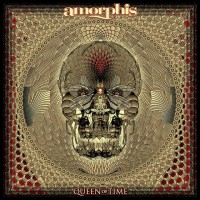     | Queen Of Time (2018) After the massive statement that was Under The Red Cloud, expectations had shot up for Queen Of Time. And after the subtle experimentations that had taken place on that effort, Amorphis decided to continue trying out new songwriting approaches, which becomes immediately apparent with the trance-y electronics that open the first song on the album, "The Bee". Beyond that, the balance of soft and extreme vocals is similar to on UTRC, but this time they mixed up the vocal arrangements, with several songs featuring growled-only choruses, previously a very rare occurrence. As far as vocals go, also featured here are several appearances from choirs, culminating in the (in my opinion, slightly iffy and cheesy) choirs- and flute-only section immediately preceding the final chorus of "Message In The Amber", and lastly, a pleasant duet of Tomi Joutsen with Anneke van Giersbergen on "Amongst Stars". Lastly, orchestral arrangements add an extra element to some of the songs. As to how the songs themselves stand up to past efforts, it's been three months since Queen Of Time was released, and whilst I like it a lot and consider it one of 2018's best albums so far, I must confess I haven't felt myself enamoured with any of the songs thus far in the way I was with the likes of "Tree Of Ages", "Narrow Path", or "Mermaid" in the aftermath of the release of previous albums. Most of my complaints feel nitpicky, but typically Amorphis haven't left me many nits to pick, so those minor issues feel slightly more notable to me here. In addition to the previous concern about the choirs on "Message In The Amber", I also have a jarring reaction whenever the chorus of "Daughter Of Hate" kicks in, and I feel like "Pyres On The Coast", accomplished as it is, doesn't have quite the same impact as a closing statement as previous final tracks such as "White Night", "The Beginning Of Time", or "Black River". However, to counteract those slight grievances, the album in general delivers everything you could hope for from modern Amorphis, and provides highlights such as prog and mysticism of "Heart Of The Giant", the galloping excitement of "We Accursed", and the sick-as-hell chorus of my personal favourite song, "Grain Of Sand" ("You will turn into? INTO DUST!", such an epic moment). If I were to rank Queen Of Time against the other Amorphis albums featuring Tomi Joutsen, I would probably rank it 6 out of 7 (above The Beginning Of Times), but that shouldn't be taken as a slight against this album, but a testament to the remarkable consistency the band has shown in the previous decade-plus in their current iteration. Standout Tracks: "The Bee," "The Golden Elk," "We Accursed," "Grain Of Sand" |
?
EPs and other releases
    | Privilege Of EvilPrivilege Of Evil [EP][/url] (1993) Arguably the most extreme release the band put out (although the band's primitive demo Disment Of Soul might disagree), this EP features demo material recorded around the same time as The Karelian Isthmus. Alongside rough version of three songs from that album are three additional tracks. "Excursing From Existence" features plenty of early-'90s European death metal buzzsaw guitar, but also brief moments of atmospheric keys, whilst the title track transitions from a frenetic opening into a doom-y synth-accompanied trudge through murky waters. Even rougher around the edges than The Karelian Isthmus, but demonstrates an interesting early side to the band that would soon disappear and should firmly appeal to early death metal enthusiasts. Standout Track: "Privilege Of Evil" |
| Black Winter DayBlack Winter Day [EP][/url] (1995) An EP release based upon the most accessible song from Tales?, this EP features some decent songs, but is arguably weaker than both Privilege Of Evil and My Kantele as far as Amorphis's EPs go. Outside of the title track, there is a brief ditty entitled "Folk Of The North," which shows hints of directions the band would eventually take, particularly on songs such as "Under A Soil And Black Stone" from Eclipse, while the "Moon And Sun" double-header both sound very much from the Tales? era of the band, despite the unusual keyboard intro to Part II. Finally, "Light My Fire" is a fun cover of a fun track. Ultimately a decent EP and offers up a couple more tracks to please early Amorphis fans looking for more of that sound. Standout Track: "Moon And Sun Part II: North's Son" |     |
     | My KanteleMy Kantele [EP][/url] (1997) Effectively a bridge release from the folk-y melodic death of Elegy to the softer progressive rock sound of Tuonela onwards, this EP features the acoustic version of "My Kantele" plus two original songs (which would feature as bonus tracks on some versions of Tuonela) and two covers. Whilst not acquainted with the original versions of these covers, the Eastern-tinged psychedelia of "Levitation" and "And I Hear You Call" fits well with the band's sound at the time, with the latter sounding slightly more natural. Concerning the original tracks, "The Brother Slayer" is a pleasant mellow song vaguely similar to the softer parts of "Weeper On The Shore," whilst the EP's clear standout cut "The Lost Son" is a very evocative instrumental piece. Arguably the strongest of the group's EPs, this acts as a good segue when moving from Amorphis's early extreme phase into their softer middle period. Standout Track: "The Lost Son (The Brother Slayer Part II" |
| Magic & Mayhem - Tales From The Early YearsMagic & Mayhem - Tales From The Early Years [Re-recorded compilation][/url] (2010) An interesting re-recording of a strong selection of songs from the first 3 albums (only "Elegy" and "In The Beginning" are obviously missing tracks), these versions do help to highlight some of the differences in sound between the 3 records by putting them on an even playing field with regards to production, vocals and so on. Whilst none of the songs here are necessarily improvements on the originals, there are some interesting takes and additions to "Black Winter Day" and "Against Widows," and "The Castaway" almost surpasses the already excellent original. The songs from "The Karelian Isthmus" are perhaps too separated from what the band is today to sound truly convincing, as they clearly miss the cavernous sound of that album, but even they offer interesting new insights into those songs, and although this release might irritate some '90s Amorphis purists, it acts as a potential gateway for later era fans to approach those early albums. Standout Track: "The Castaway" | 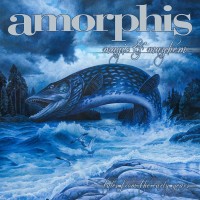     |
?
Overview
Amorphis have entered something of a purple patch of sonic consistency and quality in the past decade, but before that they underwent many transformations, from punishing doomy death metal, to truly unique melodic death metal, and passing through Suomi and hard rock territories before finally settling on the impressive blend of folk, heavy and more that they exhibit today. Throughout this journey they produced music worthy of discovery, particularly with their stunning sophomore effort and its equally jaw-dropping follow-up, but by this point they've almost covered enough ground to offer something for everyone. I hope this guide helps any uninitiated to delve into their impressive yet perhaps slightly intimidating back catalogue and find something that works for them.
Guest article disclaimer:
This is a guest article, which means it does not necessarily represent the point of view of the MS Staff.
This is a guest article, which means it does not necessarily represent the point of view of the MS Staff.
Comments
Comments: 18
Visited by: 288 users
| musclassia Staff |
| Bad English Tage Westerlund |
| Panterica |
| Marcel Hubregtse Grumpy Old Fuck Elite |
| musclassia Staff |
| Risto Wandering Midget |
| Belegûr Arise In Might! |
| Bad English Tage Westerlund |
| musclassia Staff |
| Belegûr Arise In Might! |
| RaduP CertifiedHipster Staff |
| musclassia Staff |
| Darkside Momo Retired Elite |
| musclassia Staff |
| Darkside Momo Retired Elite |
| musclassia Staff |
| Darkside Momo Retired Elite |
| FYA Destroyer |
Hits total: 16054 | This month: 39



